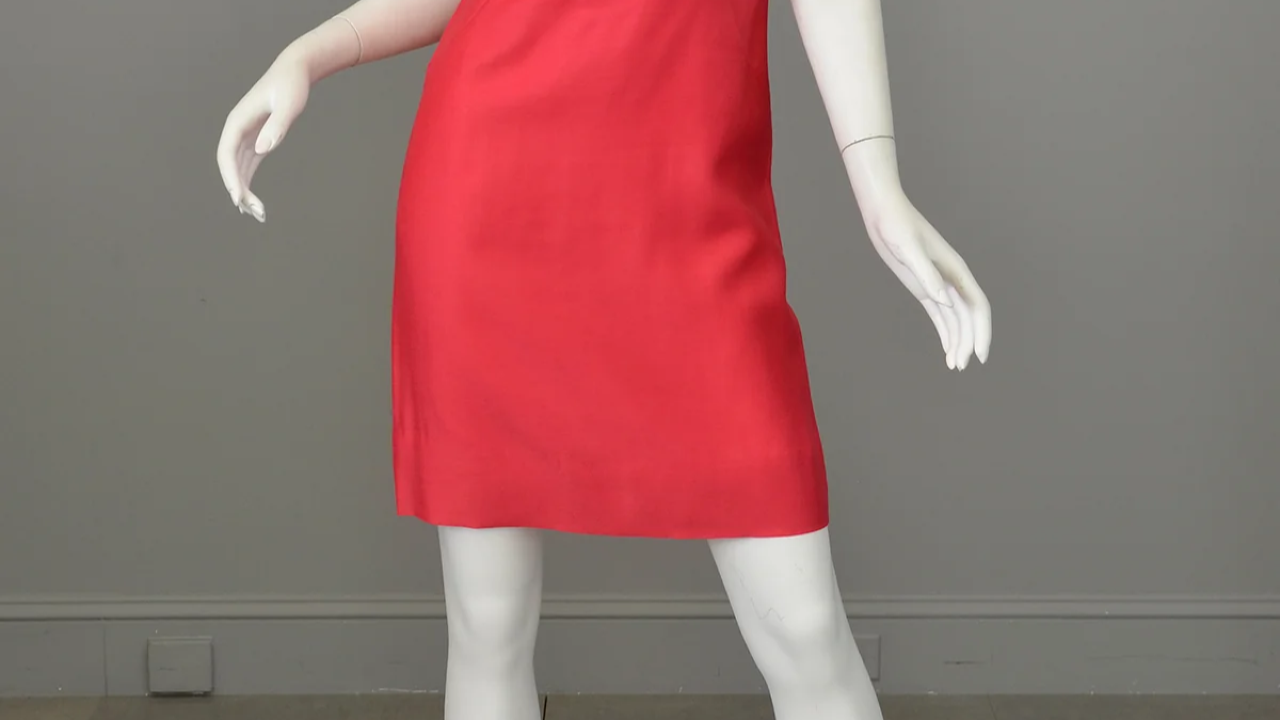AllVintageStyles
The Vintage Fashion Encyclopedia
Shift Dress


A 1960s shift dress is a straight-cut, loose-fitting dress that hangs from the shoulders without defining the waist, representing the decade's liberation from structured feminine silhouettes and embrace of youthful, minimalist fashion.
Quick Facts
- Era: 1960s (peak popularity 1963-1968)
- Origin: London/United States (mod culture and designer innovation)
- Garment Type: Straight-cut sleeveless or short-sleeve dress
- Key Identifiers: Loose fit, undefined waistline, geometric patterns, mini or above-knee length
- Typical Resale Price: $80-$350 (authentic vintage pieces)
- Best For: Mod enthusiasts, 1960s fashion collectors, and minimalist vintage styling
History & Evolution
The shift dress emerged in the early 1960s as part of the mod movement's rejection of traditional feminine silhouettes, particularly the cinched waists and structured undergarments of the 1950s. Designers like Mary Quant and Rudi Gernreich pioneered the style as a symbol of youthful rebellion and modern living, creating dresses that emphasized comfort, movement, and geometric simplicity over traditional feminine curves.
The dress gained widespread popularity by 1963, coinciding with the rise of youth culture and women's liberation movements. Its loose, straight-cut construction eliminated the need for girdles, structured bras, or petticoats, allowing women unprecedented freedom of movement and comfort. The shift became synonymous with the "youthquake" movement that prioritized youth, energy, and modernity over conventional beauty standards.
By the late 1960s, the shift dress had evolved from a subcultural statement to mainstream fashion, appearing in various lengths, patterns, and fabrics across all price points. The style's influence on modern fashion was permanent, establishing the foundation for casual, unstructured dresses that prioritized comfort and simplicity. Today, authentic 1960s shift dresses are prized for their historical significance and timeless modern appeal.
Authentication Tips
Authentic 1960s Features:
- Simple construction with minimal darts or shaping details
- Period-appropriate fabrics like wool, cotton, or early synthetic blends
- Geometric patterns, op-art designs, or solid colors typical of the era
- Above-knee or mini length consistent with 1960s proportions
- Designer labels from mod-era brands or quality department stores
Common Reproductions/Modern Pieces:
- Contemporary stretch fabrics not available in 1960s construction
- Modern fit adjustments that add waist definition or body-conscious shaping
- Digital prints or patterns using modern printing techniques
- Midi or maxi lengths that contradict authentic 1960s shift proportions
- Poor quality construction lacking the substantial feel of vintage garments
Styling & Use Cases
- Best for mod enthusiasts: Pair with go-go boots, bold tights, and geometric jewelry for authentic 1960s London styling
- Ideal for minimalist fashion: Style with simple accessories and clean lines for timeless modern sophistication
- Perfect for casual vintage wear: Combine with contemporary flats or sneakers for effortless retro-inspired daily styling
Modern styling tips:
- Layer over fitted turtlenecks during cooler weather while maintaining the loose shift silhouette
- Add contemporary statement jewelry to bridge vintage minimalism with modern styling
- Pair with ankle boots or modern sandals for updated proportions that honor the original design
FAQ
Q: How can I tell if a shift dress is authentic 1960s vintage?
A: Look for simple construction without waist definition, period-appropriate fabrics and patterns, above-knee length, and minimal shaping details. Authentic pieces show the loose, comfortable fit and quality construction typical of 1960s mod fashion.
Q: What's the typical price range for vintage 1960s shift dresses?
A: Authentic vintage shift dresses range from $80-$350 depending on designer, fabric quality, and condition. Pieces by notable 1960s designers or with exceptional mod-era details command premium prices among collectors.
Q: How should I care for a vintage 1960s shift dress?
A: Check fabric content and care accordingly - many 1960s shifts can be gently machine washed, while wool or delicate fabrics should be dry cleaned. Store hanging to maintain the straight silhouette.
Q: What makes 1960s shift dresses valuable to collectors?
A: Their representation of 1960s youth culture revolution, liberation from traditional feminine constraints, association with mod fashion and women's liberation, timeless minimalist design that remains relevant, and embodiment of the decade's embrace of comfort and modernity.
📷: Vintage Virtuosa
